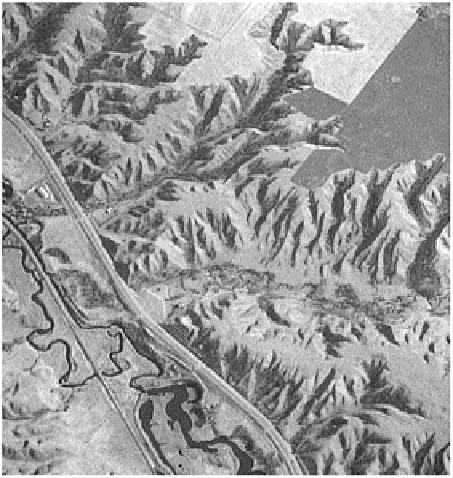Environmental Engineering Reference
In-Depth Information
per cent of non-frozen terrestrial fresh water. This maintains 30 per cent of global river
flow and is a major source of human fresh water supplies. Bedrock generally acts
hydrogeologically as an
aquifer
(underground reservoir rock) or
aquiclude
(barrier to
significant absorption/transmission). Low-permeability
aquitards
retard flow between
aquifers, whereas
aquifuges
absorb but cannot transmit water. Geological structure is
often as important as individual lithology in determining catchment groundwater
character (Figure 14.3). Water tables in soils and rock delimit the saturated and overlying
aeration zones and move in response to discharge-recharge fluxes. Aquifers
confined
by
impermeable strata generate high water pressures and force a
piezometric surface
in
wells above the general water table of
unconfined
aquifers.
Phreatic water
below the
water table moves more vigorously than
vadose water
above it. Rock discontinuity
networks generate high permeability and can be enlarged by corrosive flow, to such an
extent that drainage may be diverted underground in well structured limestone (Plate
14.3).
Storage and transmission capacity is more consistent than in soil and a function of
porosity and
hydraulic conductivity
- the ease with which porous rock transmits water.
This is a component of
Darcy's law
, which shows groundwater flow
Q
g
as:
Plate 14.2
'Badlands' gulleying in areas of dryland farming
in the upper Missouri river basin, Montana, USA. Headward
extension of gulleys in berms flanking the meandering river
channel have begun to eat away at the adjacent river
terraces.
Photo: Ken Addison.

